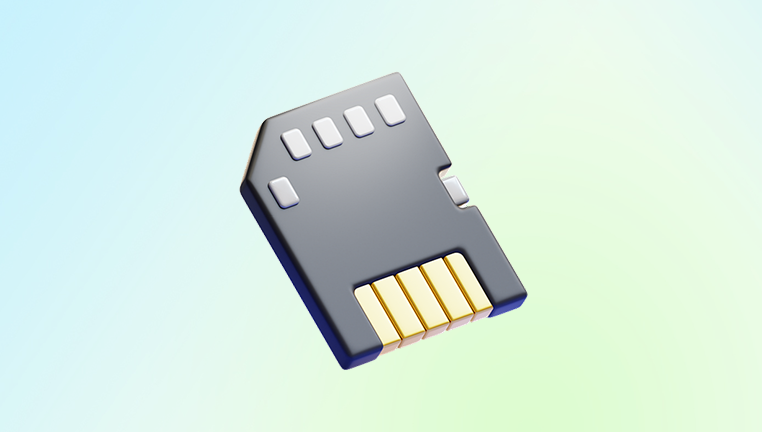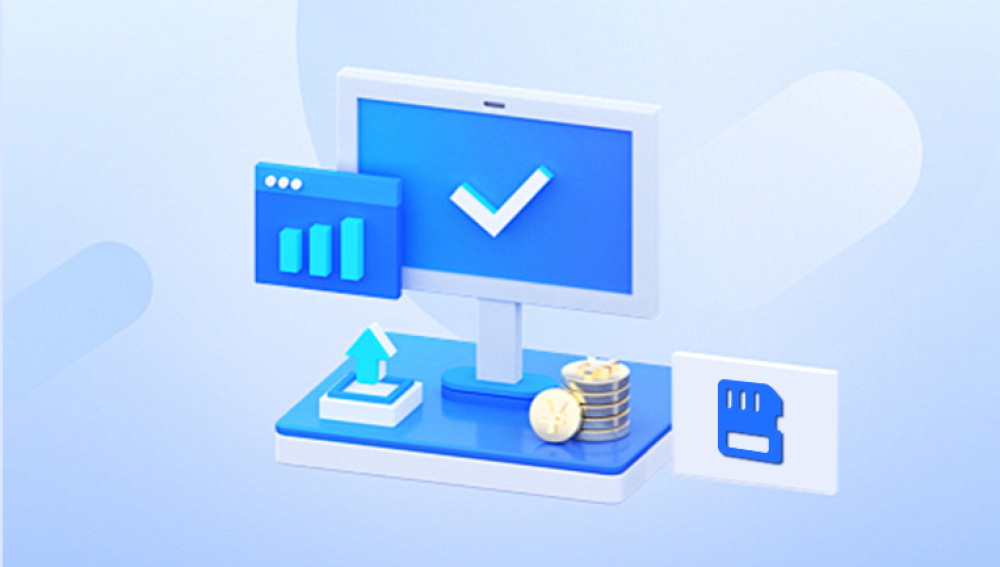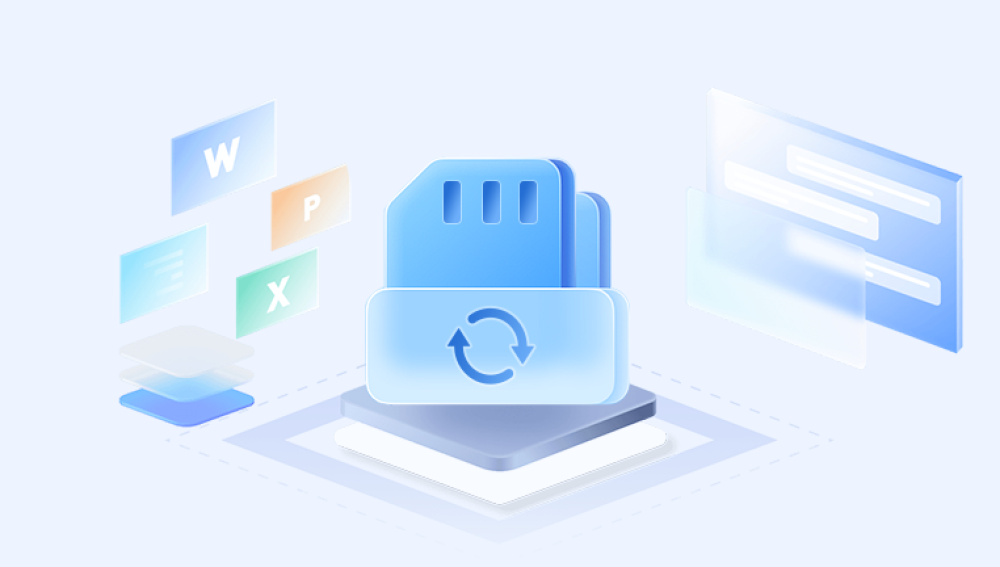Micro SD cards are indispensable in today's digital world, used in smartphones, drones, cameras, tablets, and other portable devices. Their tiny form factor and high storage capacity make them ideal for storing vast amounts of data, including photos, videos, audio files, documents, and app data. However, this same compactness also makes micro SD cards highly vulnerable to physical damage. Bending, snapping, exposure to water, extreme temperatures, or electrical surges can render a micro SD card unreadable and result in seemingly permanent data loss.
When a micro SD card is physically broken, recovery becomes a significantly more complex process than typical logical errors or accidental deletion. But all hope is not lost. Depending on the extent and nature of the physical damage, specialized techniques and services can sometimes retrieve lost data.
Cracked or Broken Plastic Casing: The outer shell of the card may crack, exposing internal components.

Bent Card: Often caused by improper insertion or removal from a device.
Broken Pins or Contacts: The metal connectors become damaged or detached.
Water Damage: Exposure to liquids can corrode the internal circuitry.
Burn Damage: Overheating, electrical shorts, or fire can damage components.
Internal PCB Damage: The printed circuit board (PCB) inside the card becomes fractured.
Connector Wear: Frequent use may wear out the gold contacts, making them unreadable.
Diagnosing the type of damage helps determine whether data recovery is possible and what approach is best.
Is Data Recovery Possible from a Physically Broken Micro SD Card?
The answer is yes—but it depends on the nature and severity of the damage. Here’s a breakdown:
Minor damage such as a cracked casing or bent card may still allow DIY methods.
Moderate damage like broken pins or partial water exposure might require specialized tools.
Severe damage such as PCB fracture or burn damage typically requires professional data recovery labs.
Recovery becomes more difficult and expensive as the damage worsens. In some cases, especially with electrical damage or complete chip destruction, data may be unrecoverable.
Initial Steps When You Discover Physical Damage
Before doing anything, take these important steps:
Stop Using the Card: Do not attempt to insert a broken card into a device—it may worsen the damage.
Inspect the Damage: Use a magnifying glass to check for visible cracks, bent areas, or water exposure.
Avoid DIY Repairs If Unsure: If the card is visibly damaged, handling it improperly could render recovery impossible.
Place It in a Safe Environment: Store the card in a dry, static-free container.
Document the Issue: Take pictures of the card’s condition in case you need professional help later.
DIY Methods for Recovering Data from Physically Damaged Cards
Only attempt DIY methods if the card shows minor physical damage and you're comfortable with some basic technical handling.
1. Use an External Card Reader
Try inserting the card into a high-quality card reader connected to your computer. Sometimes devices have trouble reading a card while an external reader works better.
2. Test on Multiple Devices
Try reading the card on different computers, phones, or cameras. The issue may be with the original device, not the card.
3. Use Data Recovery Software
Drecov Data Recovery offers a user-friendly, efficient, and reliable solution for recovering lost or deleted data from SD cards. Whether your memory card has suffered from accidental deletion, formatting, file system corruption, or logical errors, Drecov Data Recovery is designed to restore your valuable data with minimal hassle.
With its intuitive interface and deep scanning algorithms, Drecov Data Recovery can detect and recover a wide range of file types—including photos, videos, audio files, documents, and more—from SD cards used in digital cameras, smartphones, drones, dash cams, tablets, and other devices. Even if the SD card is no longer recognized by your operating system, the software often finds a way to retrieve files that seem lost.
The software supports all major SD card formats, including microSD, SDHC, SDXC, and miniSD, and is compatible with both Windows and macOS systems. It offers a preview feature that allows users to see recoverable files before initiating the recovery process, ensuring that only the necessary data is restored.
4. Fixing Loose Contacts (Advanced)
If the metal connectors are slightly out of place or dirty, gently clean them with a pencil eraser or isopropyl alcohol on a Q-tip. Do not attempt if the card is broken in half or has internal damage.
5. Micro SD to SD Adapter Trick
Sometimes using an SD adapter helps establish a better connection than a micro SD slot.
If the card is cracked, burnt, or has visible circuit damage, avoid DIY recovery.
When to Seek Professional Help
Professional data recovery services are often the only viable solution when:
The card is snapped in half
Burn damage is evident
PCB or internal wiring is damaged
Water damage has caused corrosion
The chip is not detected by any reader
Professional recovery services use clean rooms, microscopes, and soldering equipment to safely access the NAND memory chip where your data is stored.
Top Data Recovery Services for Physically Broken Micro SD Cards
1. DriveSavers
Features:
Certified cleanroom recovery
Chip-off recovery techniques
Free shipping and evaluation
Pros:
High success rate
HIPAA & SOC II compliant
Cons:
Expensive (often $300–$1500)
2. Ontrack Data Recovery
Features:
Recovery from damaged or broken flash storage
Transparent quote process
Pros:
Global service availability
Multiple service levels
Cons:
High cost
3. SalvageData
Features:
Free diagnosis
ISO 5 Class 100 cleanroom
Pros:
Offers emergency service
Cons:
Limited chip-off support
4. Gillware Data Recovery
Features:
Hardware-based flash recovery
No data, no charge guarantee
Pros:
Experienced with flash media
Cons:
Not all regions supported
Chip-Off Recovery Technique Explained
One of the most effective professional methods for physically damaged micro SD cards is the chip-off recovery technique. This involves:
Removing the NAND Memory Chip: Using heat or specialized tools to extract the memory chip from the broken PCB.
Reading the Chip: Using a dedicated NAND reader to extract raw data.
Reconstructing the File System: Interpreting raw binary data to rebuild lost files.
This technique requires expert skills and expensive equipment, which is why it’s only offered by certified labs.
Prices vary based on severity, service provider, and urgency (e.g., 24-hour service may cost more).
Preventing Physical Damage to Micro SD Cards
The best way to avoid a stressful and expensive recovery is to prevent damage in the first place. Here are key tips:
Use Protective Cases: Store cards in anti-static, water-resistant cases.
Handle With Care: Never bend, drop, or force a card into a slot.
Avoid Cheap Readers: Use reliable, branded card readers.
Keep Away from Water & Heat: Moisture and heat are top causes of failure.
Eject Properly: Always use the “safely remove” option on your device.
Label Your Cards: To avoid repeated use or confusion.
Back Up Regularly: Always keep a copy of important files.
Success Stories & Real-World Examples
Many users have successfully recovered data from broken micro SD cards. Here are a few examples:
Photographer Rescues Wedding Photos: A professional photographer dropped a camera into water. The micro SD card was water-damaged. Gillware performed chip-off recovery and restored 95% of the data.
Student Recovers Research Data: A university student accidentally snapped a micro SD card. Ontrack used forensic techniques to extract the memory chip and recover key documents.
Traveler Saves Vacation Footage: A drone crash left a micro SD card physically broken. DriveSavers recovered all video files using cleanroom methods.
Recovering data from a physically broken micro SD card is undoubtedly more complex and delicate than recovering from logical errors or corruption. Depending on the type and severity of the damage, recovery may range from simple software use to requiring expensive professional services.
DIY recovery is only suitable for minor damage and should always be approached with caution. For severe cases especially involving internal damage, fire, or water exposure professional recovery labs equipped with chip-off and cleanroom tools offer the best chance of success.
Regardless of the approach, the most crucial elements are speed and care. Stop using the card immediately, store it safely, and evaluate your options based on how much the data means to you. And moving forward, adopting best practices for storage, handling, and backups can save you from data disasters in the future.




